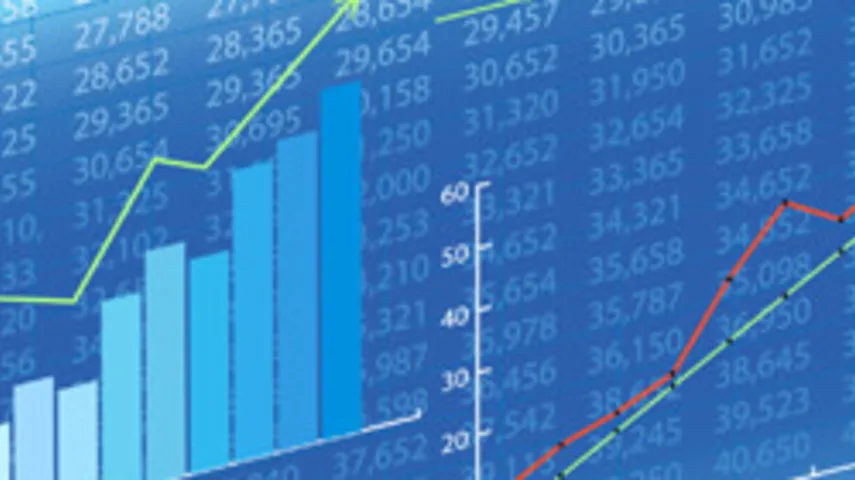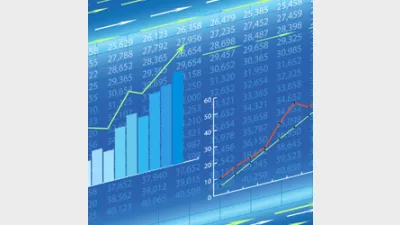International equities - to hedge or not to hedge?




Lonsec
Lonsec believes that on a strategic basis, an unhedged exposure to global equities is appropriate over the long term (ie, 10 years or more) because:
- Over the long term, the risk and return characteristics of hedged and unhedged global equities are broadly similar;
- Unhedged global equities are less correlated to Australian equities than hedged global equities, therefore offering superior diversification characteristics to a portfolio; and
- Most investors will have some exposure to hedged assets within their portfolio, including global fixed interest, global property securities and global listed infrastructure.
Risk and return
While hedged global equities may benefit from a yield pick-up due to interest rate differentials between the Australian dollar and the underlying currency exposure of the portfolio, this is expected to be largely offset by the cost of hedging.
 As Figure 1 highligts, the long-term average return and volatility for hedged and unhedged global equities have been similar. Of course, over shorter periods, there will be material deviations between the two.
As Figure 1 highligts, the long-term average return and volatility for hedged and unhedged global equities have been similar. Of course, over shorter periods, there will be material deviations between the two.
Diversification
Figure 2 shows the 10-year correlations of unhedged and hedged global equities relative to other asset classes.
Unhedged correlations are lower in all cases except relative to Australian fixed interest and cash.
Specifically, unhedged global equities are less correlated with Australian equities, which is important given Australian equities are a dominant allocation within most growth-oriented portfolios.
 However, in the short term, currencies may be volatile and it may be appropriate to complement a long-term strategic allocation to unhedged global equities with global equities products that have an active currency overlay.
However, in the short term, currencies may be volatile and it may be appropriate to complement a long-term strategic allocation to unhedged global equities with global equities products that have an active currency overlay.
There are a large number of unhedged global equities funds with active currency hedging strategies which aim to reduce the impact of currency volatility on investment returns.
This is an effective way to introduce further diversification to a portfolio.
Mercer
Mercer believes retail investors should consider currency over both the long and medium term. (In addition, active currency managers may be appointed to implement tactical or short-term currency management. These managers fall within the alternatives absolute return grouping.)
For Australian investors deciding the strategic or long-term level of hedging, there are essentially two competing considerations:
- Fully hedged positions have outperformed unhedged positions historically.
- Currency exposure provides diversification benefits for risky assets.
The strategic currency position needs to be assessed at the total portfolio level by balancing these competing considerations. In general, a higher currency exposure will benefit higher growth portfolios by reducing the volatility of a portfolio’s total returns – ie the diversification benefits of currency increase with the holding of risky assets.
However, there are practical considerations at the asset class level. Mercer recommends fully hedging the currency exposure of high-income, lower-volatility assets, such as global fixed interest.
Unlisted, illiquid assets are better left unhedged at the manager level because hedging can result in short-term liquidity issues.
To implement the desired level of currency exposure for the portfolio, larger institutional clients can use a specialist foreign currency overlay manager.
For retail clients, the hedged/unhedged mix for global equities may be used as a balancing item to achieve the desirable level of exposure for the overall portfolio, after taking into account foreign exchange exposure from any unhedged global assets.
Mercer has assessed different risk profiles to determine the level of currency exposure that minimised the variance of a portfolio’s historical returns.
As expected, the results depend on the profile’s growth/defensive splits. As a general rule, we recommend a strategic currency exposure for the portfolio equal to about 30 per cent of listed equities (Australian equities, global equities, AREITs, GREITs, listed infrastructure). Refer to Figure 3.

Like all investment decisions, the currency hedging decision should not be a set-and-forget position. As seen in recent years, the Australian dollar can move within a wide range and can deviate significantly from estimates of its long-term fair value.
This presents investors with medium-term risks and opportunities. Consequently, Mercer believes that the appropriate level of currency hedging needs to be dynamic.
Morningstar
The past 10 years are often referred to as a ‘lost decade’ for Australian investors in unhedged global equities. The spectacular rise of the Australian dollar, which more than doubled in value over the period, significantly eroded returns for unhedged investors. Past performance regularly dominates portfolio construction decisions, but it’s critical to also think beyond performance.
Rewind 10 years and many fund managers provided global equity funds with tactical currency funds or a set 50:50 hedged/unhedged currency strategy. The currency allocation within global equities was decided by the fund managers.
This has now changed, and in a big way. The vast majority of global equity funds offered now come in fully hedged or unhedged versions and the active decision has transferred from the fund manager to the investor. Why? Forecasting currencies is a notoriously difficult exercise to get right consistently.
The Australian dollar can have a large bearing on short-term returns, so Australian investors can’t just ignore the currency implications when investing overseas.
However, it may come as a surprise that the returns from hedged global share funds over the 10 years to 30 June, 2011 were much more volatile than those from unhedged global equities. Currency hedging may have protected the quantum of returns, but the ride was a more volatile one, especially during periods of distress such as 2008.
Attempting to ‘time’ specific currency inflection points is a pointless exercise, though timing can’t be ignored entirely. Given the A$/US$ cross-rate in 2011 was trading in a band between US$0.95 and US$1.09 – a large range, but less than in 2008 when it fell to US$0.61 – these large differences can impact investors’ objectives.
Australia’s role as a proxy for global growth has been underpinned by our dependence on exports to burgeoning emerging nations such as China. Hence, because the Australian dollar is widely-touted as a commodity currency, when global growth expectations decline the Australian dollar typically suffers sharp falls.
Morningstar believes risk is too frequently overlooked when making the hedging decision. The risk side of the investment equation is an element which investors and fund managers alike frequently neglect in favour of focusing on returns.
Over the long haul, we believe foreign exchange movements should wash out of the returns from offshore investments, and that’s before considering the costly exercise of adjusting hedging exposure.
But, as discussed above, the pro-cyclical nature of the Australian dollar makes it susceptible to sharp sell-offs. Currency valuations at the investor’s point of entry also matter.
As a result, Morningstar’s strategic asset allocation has adopted an unhedged global equities position.
However, our model portfolios do have a tactical currency hedging element through the manager selection framework. A number of funds have been chosen for their ability to tactically allocate to currencies whether in an alpha-seeking process or from a risk control perspective.
Morningstar believes this is an effective way for advisers to efficiently manage the currency exposure in global equities.
Standard & Poor’s
The high volatility of the Australian dollar in recent years has resulted in currency gains and losses impacting on investment portfolio returns. As a result, many now question how to manage global equities’ currency exposure and whether to employ a fully hedged, partially hedged or unhedged position in portfolios.
Pending a client’s risk and return objectives, S&P typically suggests a currency unhedged global equities position for accumulators’ portfolios and a combination of hedged, unhedged and actively managed exposure for income stream recipients.
For accumulators making regular contributions, the impact of the volatile Australian dollar on investor returns is negligible over the long run.
It also has a high correlation to global growth and hence when growth declines (as in recent months), equities and the Australian dollar typically fall in value, but an unhedged position provides a buffer due to gains from the Australian dollar depreciation.
In addition, the earnings of Australian companies are impacted significantly by the value of the Australian dollar, and diversification benefits are typically achieved by diversifying a portfolio’s exposure to any one currency. Hence for the long-term accumulator portfolio, S&P typically suggests a currency unhedged global equities exposure.
However, the risks change for portfolios where contributions are no longer being made. Income stream recipients, for example, are in the phase of their lives where they are employing the reverse of dollar cost averaging (selling units regularly for income payments) and can be significantly impacted by the volatile Australian dollar.
During the 2000s, investors faced low returns from global equities which were compounded for unhedged portfolios due to the long-term upward trend in the Australian dollar, with the end result that unhedged portfolios not only endured poor returns from underlying assets, but also experienced losses from unhedged Australian dollar exposures as the Australian dollar rose, benefiting from the huge growth in demand for resources from 2003 onwards.
Hence, for investors no longer contributing to portfolios, we suggest considering 50 per cent unhedged, 25 per cent hedged and 25 per cent actively managed.
Back testing analysis shows the optimal currency hedging position over the last 20 years would have been 40 per cent hedged and 60 per cent unhedged – and hence, it makes sense to have a combination of hedged and unhedged global equities exposure in a portfolio.
Also, not only have hedging strategies protected investors when the Australian dollar is on a long-term upward trend, but have also aided returns in recent years due to Australian investors being paid to hedge portfolios (ie the carry trade).
Using active currency management in a portfolio can significantly reduce the impact of Australian dollar volatility on portfolio returns by balancing the exposure to hedged and unhedged global equities, pending the Australian dollar valuation.
However, in practice, this approach is extremely difficult to manage and is usually outsourced to a fund with separate currency management expertise.
Ultimately, there is no optimal hedging strategy for all investors as risk and return objectives plus stage-of-life will impact on which strategy is most appropriate to employ.
Van Eyk
It is fairly widely accepted that predicting currency moves is difficult if not impossible (although currency managers may dispute this).
There is also an increasing recognition of the benefits of long-term, valuation-based investing, which again relegates currency to the too-hard basket, as value can be difficult to define for currencies given they have no yield.
 The closest thing to a long-term valuation metric is purchasing power parity (PPP), which suggests Australian investors should have more exposure to other currencies as the Australian dollar looks overvalued (Figure 4).
The closest thing to a long-term valuation metric is purchasing power parity (PPP), which suggests Australian investors should have more exposure to other currencies as the Australian dollar looks overvalued (Figure 4).
This suggests a fully unhedged position is better as risks are now biased towards Australian dollar weakness.
On the other hand, those with a 10-year investment time-horizon with a sole focus on returns and a strong belief in the continued rise of Asia would believe in a stronger-for-longer Australian dollar and the benefits of a hedged position.
 In fact, Figure 5 suggests the long-term history of the Australian dollar could justify a range-bound, bullish or bearish trend, depending on the time-horizon chosen .
In fact, Figure 5 suggests the long-term history of the Australian dollar could justify a range-bound, bullish or bearish trend, depending on the time-horizon chosen .
Paradoxically, the short-term justification for holding overseas currency exposure is easier to analyse as there is a relative degree of certainty about its correlation with other assets.
The Australian economy and share market are leveraged to Asian economic growth and, by extension, global economic growth and share market performance.
 This is a fundamental reason why the Australian dollar has become a lightning rod for the risk-on/risk-off trade that has dominated markets (see Figure 6).
This is a fundamental reason why the Australian dollar has become a lightning rod for the risk-on/risk-off trade that has dominated markets (see Figure 6).
Given this relationship, the timing of potential downside risk is also very important.
The benefits of overseas currency exposure are likely to accrue exactly when needed most – because Australian dollar weakness is very likely to coincide with highly negative returns from the rest of portfolios.
In summary, if an investor has a very high degree of conviction about the positive outlook for Asia over the next 10 years and is unconcerned about volatility, a fully hedged global equities position will maximise an investment strategy predicated on those beliefs.
If not, it may pay to retain some insurance in the form of offshore currency exposure, primarily the US dollar, which remains the world reserve currency and liquid haven in times of stress. Those without a definitive view may opt for an arbitrary 50 per cent hedge – but perhaps the question should be whether to look for more currency diversification elsewhere in the portfolio?
Zenith Investment Partners
Campbell, Serfaty-de Medeiros and Viciera (2009) investigated the correlations of foreign exchange rates with stock returns over 1975 to 2005.
Their research supports the view that the Australian dollar is positively correlated with local currency returns on global equity markets.
This positive correlation is consistent with fundamental drivers: global economic growth drives equity and commodity prices in the same direction. The Australian dollar typically falls when global equity markets fall, cushioning poor performance.
The opposite is also true – the Australian dollar typically rises when equity markets rise. The end result is a smoother return pattern for unhedged investors relative to hedged investors.
Zenith believes these findings should be considered when constructing international shares portfolios, as they imply that Australian-based investors will be able to reduce risk by not being fully hedged to the Australian dollar.
While from a risk minimisation perspective being unhedged is the optimal outcome, total return expectations for Australians investing in international shares should not be the same for hedged and unhedged positions.
That is, investors generally have to choose between less risk and lower returns from unhedged investing, versus higher returns and higher risk of hedged investing.
A higher return expectation for hedged exposures is backed by theory, as the assumed return from hedging is the difference between long-term interest rates (driven by longer-term growth rates) and therefore if domestic interest rates (and growth expectations) are higher than rest of world, this should provide positive returns from hedging.
Based on this analysis, we currently have slightly higher expectations for hedged exposure to international shares based on the positive interest rate differential between Australia and other developed countries.
Furthermore, this analysis also implies that the optimal level of hedging required should be linked to the risk profile of the investor.
Based on forward-looking risk and return expectations for hedged and unhedged international shares, combined with analysis of correlations with other sectors, Zenith believes growth profile investors (70 per cent growth assets) will benefit from adopting a 50-50 approach when hedging the foreign currency exposure of their international shares exposures.
While on face value this may appear a simplistic approach, growth profile investors would have maximised Sharpe Ratios with a 50/50 exposure over the 20 years to 2010.
A 50/50 approach also provides some insurance from an event risk perspective, which may lead to a large appreciation or depreciation of the Australian dollar.
For those in lower risk profiles, a lower than 50 per cent hedged exposure makes sense based on their lower risk/return expectations (and vice versa).
Recommended for you
The Australian Wealth Advisors Group has completed two strategic investments, doubling its number of authorised representatives and increasing its FUMA by more than $1 million.
A strong demand for core fixed income solutions has seen the Betashares Australian Composite Bond ETF surpass $1 billion in funds under management, driven by both advisers and investors.
As the end of the year approaches, two listed advice licensees have seen significant year-on-year improvement in their share price with only one firm reporting a loss since the start of 2025.
Having departed Magellan after more than 18 years, its former head of investment Gerald Stack has been appointed as chief executive of MFF Group.










